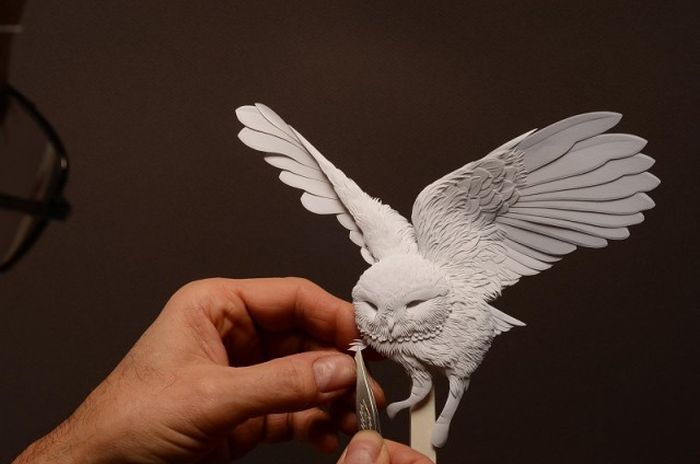
When you have plenty of time to revise, use the time to work on your paper and to take breaks from writing. If you can forget about your draft for a day or two, you may return to it with a fresh outlook. During the revising process, put your writing aside at least twice—once during the first part of the process, when you are reorganizing your work, and once during the second part, when you are polishing and Find out if your paper contains plagiarized text before your professor does. We compare your text to over 10 billion documents. Immediate Results You want instant gratification and so do we. Using Artificial Intelligence and Data Science, submissions are analyzed in real-time with results typically appearing seconds after submission. Our A reliable proofreading tool and essay editor for any writer or student. Typely is more than just a proofreading tool. It's a complete writing environment. More than a thousand checks are being performed and we've only scratched the surface. Gain access to humanity’s collective understanding about the
Steps for Revising // Purdue Writing Lab
This page is brought to you by the OWL at Purdue University. When printing this page, you must include the entire legal notice.
All rights reserved. This material may not be published, reproduced, broadcast, revise my paper, rewritten, or redistributed without permission. Use of this site constitutes acceptance of our terms and conditions of fair use. Proofreading is primarily about searching your writing for errors, both grammatical and typographical, before submitting your paper for an audience a teacher, a publisher, etc, revise my paper.
Use this resource to help you find and fix common errors. When you have plenty of time to revise, use the time to work on your paper and to take breaks from writing, revise my paper. If you can forget about your draft for a day or two, you may return to revise my paper with a fresh outlook.
During the revising process, put your writing aside at least twice—once during the first part of the process, when you are reorganizing your work, and once during the second part, when you are polishing and paying attention to details. Use the following questions to evaluate your drafts.
You can use your responses to revise your papers by reorganizing them to make your best points stand out, by adding needed information, by eliminating irrelevant information, and by clarifying sections or sentences. What are you trying to say in the paper? In other words, revise my paper, try to summarize your thesis, or main point, revise my paper, and the evidence you are using to support that point. Try to imagine that this paper belongs to someone else.
Does the paper have a clear thesis? Do you know what the paper is going to be about? What are you trying to do in the paper? In other words, are you trying to argue with the reading, to analyze the reading, to evaluate the reading, to apply the reading to another situation, or to accomplish another goal?
Does the body of your paper support your thesis? Do you offer enough evidence to support your claim? If you are using quotations from the text as evidence, did you cite them properly? Revise my paper all of the ideas revise my paper back to the thesis? Is there anything that doesn't seem to fit? If so, you either need to change your thesis to reflect the idea or cut the idea. Do all of the ideas in the paper make sense? Are there unclear or confusing ideas or sentences?
Read your paper out loud and listen for awkward pauses and unclear ideas. Cut out extra words, vagueness, and misused words. Visit the Purdue OWL's vidcast on cutting during the revision phase for more help with this task. Do you see any problems with grammar, punctuation, or spelling? If you think something is wrong, you should make a note of it, even if you don't know how to fix it.
You can always talk to a Writing Lab tutor about how to correct revise my paper. Try to detach yourself from what you've written; pretend that you are reviewing someone else's work. What would you say is the most successful part of your paper? How could this part be made even better?
What would you say is the least successful part of your paper? How could this part be improved? Find Info For Find Info For Academics Admissions Current Students Athletics About Careers Prospective Students Research and Partnerships Quick Links Apply News President Shop Visit Give Emergency.
Purdue Online Writing Lab College of Liberal Arts. Writing Lab Purdue OWL Research Contact Site Map. General Writing The Writing Process Proofreading.
Welcome to the Purdue OWL This page is brought to you by the OWL at Purdue University. Steps for Revising Your Paper Summary: Proofreading is primarily about searching your writing for errors, both grammatical and typographical, before submitting your paper for an audience a teacher, a publisher, etc.
Revising Your Research Paper
, time: 4:48Paper Checker | Online Proofreader and Grammar Checker
Find out if your paper contains plagiarized text before your professor does. We compare your text to over 10 billion documents. Immediate Results You want instant gratification and so do we. Using Artificial Intelligence and Data Science, submissions are analyzed in real-time with results typically appearing seconds after submission. Our A reliable proofreading tool and essay editor for any writer or student. Typely is more than just a proofreading tool. It's a complete writing environment. More than a thousand checks are being performed and we've only scratched the surface. Gain access to humanity’s collective understanding about the When you have plenty of time to revise, use the time to work on your paper and to take breaks from writing. If you can forget about your draft for a day or two, you may return to it with a fresh outlook. During the revising process, put your writing aside at least twice—once during the first part of the process, when you are reorganizing your work, and once during the second part, when you are polishing and

No comments:
Post a Comment